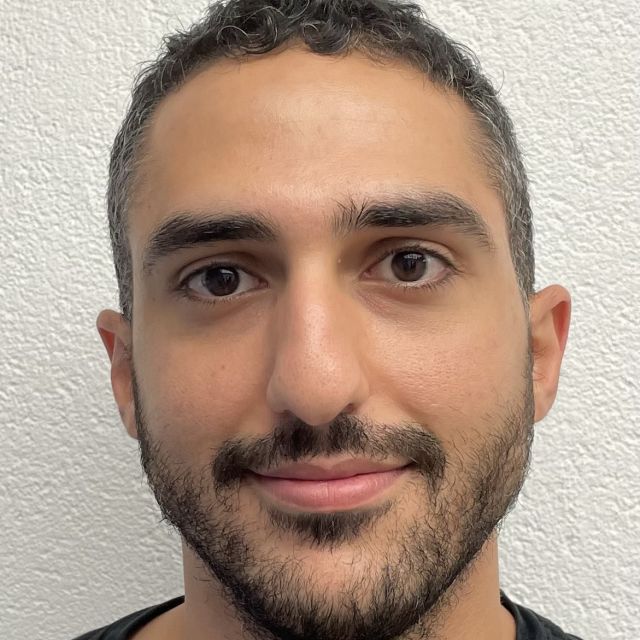
About Nima
- Advisor: Alexander Spokoyny
- Department: Chemistry
- Campus: UCLA
- BioPACIFIC MIP Research: SET 2 - Sequence-Defined Materials
What is your research focus?
My research is centered around using sequence specific peptides as substrates for macrocyclizations around rigid aryl scaffolds. This is accomplished by leveraging the chemoselectivity of cationic Au(III) reagents for soft nucleophiles to facilitate reductive eliminations of aryl moieties onto cysteine sidechains. The resulting macrocyclized or “looped” peptide can mimic the binding profile of antibodies and can be used in applications ranging from therapeutics to benchtop research. Additionally, trillions of structurally distinct hybrid peptide macrocycles can be generated utilizing this chemistry. By altering the identity of the unreactive residues in the peptide chain, one can generate entire libraries of potentially therapeutic biologics. The growth of X-ray diffraction sized crystals of peptide macrocycles has been notoriously difficult, opening up the possibility of utilizing techniques such as MicroED as the driving force behind the structural determination of our hybrid peptides.
The overlap between my work and that done at BioPACIFIC MIP, especially SET 2, is twofold. Firstly, I aim to synthesize a library of peptides to be used in our Au(III)-based macrocyclizations. The use of key instrumentation offered by BioPACIFIC MIP greatly aids in that endeavor. Secondly, the MicroED facilities present offer an exciting opportunity to investigate the structural composition of these hybrid peptide macrocycles. As these antibody mimics have potential therapeutic properties, having an accurate understanding of connectivity and geometries in our system is critical.
What excites you about NSF BioPACIFIC MIP?
As someone who is strongly motivated by research at the intersection of organometallic chemistry and biology, the BioPACIFIC MIP Fellows program offers an excellent opportunity to collaborate with leaders in the field. This program will expand my understanding of science through exposure to cutting-edge research, while also enabling me to contribute to other exciting projects. I am eager to share my research ideas and engage in innovative projects that bridge diverse scientific disciplines. The outreach opportunities, meetings and conferences offered by this program are also of particular interest to me, as they provide exposure to great science and offer a platform to engage in science communication to a broader audience. Furthermore, the state-of-the-art facilities available through the program can be used to investigate and gain insight into the unique structural complexity of the hybrid peptide landscape. Insight that can potentially be used to guide the synthesis of the next generation of peptide macrocycle therapeutics. Finally, the social and community-centric aspects of the program strongly align with the principles of scientific collaboration, which I find particularly compelling. The Fellows program has an excellent reputation for fostering great scientific inquiry, and I would love the opportunity to be a part of it.